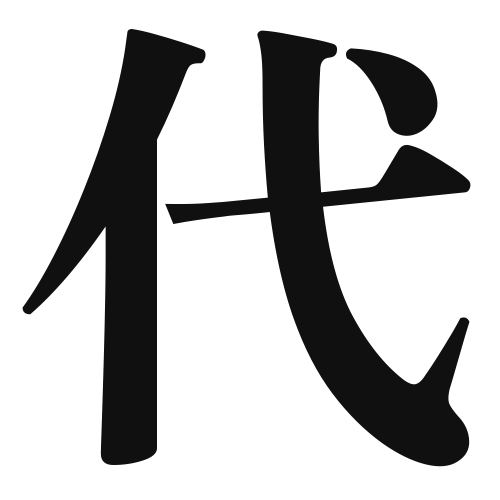1. Overview of Meaning
The kanji “代” (dai) primarily means “substitute,” “generation,” or “era.” It is often used to indicate a replacement or a period of time in which something occurs.
2. Formation and Radical
Formation of the Kanji: The kanji “代” is a compound character that combines elements to convey its meaning. It is not a pictogram but rather a character that represents a concept.
Radical: The radical for “代” is “亻” (the person radical), which suggests a connection to people or human actions.
3. Examples of Usage
Common Words and Phrases: Some frequently used words that include “代” are:
- 代金 (daikin) – payment
- 世代 (sedai) – generation
- 代理 (dairi) – agency or representation
Example Sentences in Daily Conversation:
- この商品は代金が高いです。 (Kono shouhin wa daikin ga takai desu.) – This product is expensive.
- 私たちの世代はテクノロジーに慣れています。 (Watashitachi no sedai wa tekunorojii ni nareteimasu.) – Our generation is accustomed to technology.
4. Synonyms and Antonyms
Similar Kanji: A similar kanji is “替” (tai), which also means “to replace” but is more commonly used in contexts involving changing something, like clothing or plans.
Opposite Kanji: An antonym could be “保持” (hoji), which means “to maintain” or “to keep,” indicating the opposite action of replacing or substituting.
5. Cultural and Historical Background
Connection to Japanese Culture: The concept of “代” is significant in Japanese culture, often reflecting the importance of generations and the passing down of traditions.
Proverbs and Idioms: One common saying is “代を重ねる” (dai o kasaneru), which means “to pass down through generations,” emphasizing the continuity of culture and values.
